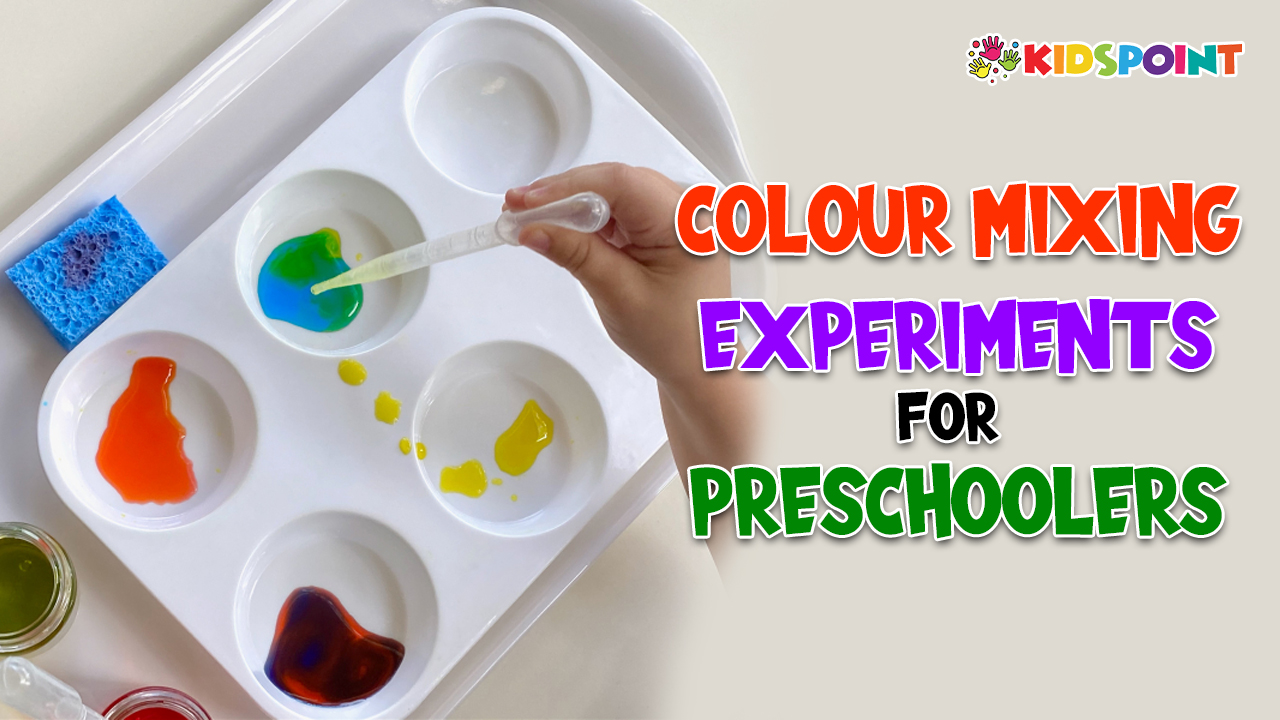Color is one of the most captivating aspects of our world, especially for young minds. For preschoolers, understanding how colors blend and interact can be a magical journey of discovery. Engaging in color mixing experiments not only enhances their creativity but also lays the foundation for understanding basic scientific principles. In this guide, we’ll explore a variety of fun and educational color mixing experiments tailored specifically for preschoolers, brought to you by The Kids Point.
Understanding Primary Colors
Before diving into color mixing, it’s essential to introduce preschoolers to the concept of primary colors. Primary colors are the building blocks of all other colors and cannot be created by mixing other colors together. The three primary colors are red, blue, and yellow. Through hands-on activities and visual aids, preschoolers can grasp the idea that all colors originate from these primary hues.
Mixing Primary Colors
Materials Needed
- Red, blue, and yellow paint
- Paintbrushes
- Paper or canvas
Procedure
- Begin by placing blobs of red, blue, and yellow paint on the paper or canvas.
- Encourage the preschoolers to explore mixing the primary colors together using their fingers or paintbrushes.
- Observe and discuss the new colors that are formed by combining different primary colors.
Discussion Points
- What happens when red and yellow are mixed? (Orange)
- What about blue and yellow? (Green)
- And red and blue? (Purple)
- Emphasize that these new colors are called secondary colors.
Exploring Color Wheels
Materials Needed
- Color wheel charts (printouts or DIY)
- Crayons or markers
Procedure
- Introduce preschoolers to the concept of a color wheel, which organizes colors in a circular format.
- Provide each child with a color wheel chart and crayons or markers.
- Guide them in coloring the primary and secondary colors on the wheel.
- Encourage them to spin the color wheel and observe how the colors interact.
Discussion Points
- How are the primary colors positioned on the color wheel?
- Can they identify the secondary colors and their placement?
- Discuss complementary colors (colors opposite each other on the wheel) and how they interact.
Colorful Ice Cubes
Materials Needed
- Ice cube trays
- Water
- Food coloring (primary colors)
Procedure
- Fill each compartment of the ice cube trays with water.
- Add a few drops of food coloring to each compartment, using red, blue, and yellow to create primary color ice cubes.
- Freeze the trays overnight.
- Once frozen, remove the colorful ice cubes and place them on a tray or in a shallow container.
Discussion Points
- Observe how the ice cubes change the color of the water as they melt.
- Encourage preschoolers to mix different colored ice cubes together and observe the resulting colors.
Rainbow Milk Swirls
Materials Needed
- Whole milk
- Food coloring (primary colors)
- Dish soap
- Cotton swabs
- Shallow dish or plate
Procedure
- Pour a thin layer of whole milk into the shallow dish or plate.
- Add drops of food coloring to the milk, using the primary colors.
- Dip a cotton swab into dish soap and then touch it to the surface of the milk.
Discussion Points
- Observe the colorful swirls and patterns that form when the dish soap is added to the milk.
- Discuss the science behind this reaction, known as surface tension and soap molecules interacting with the fat in the milk.
Colorful Shadow Play
Materials Needed
- Flashlight
- Translucent objects (plastic toys, colored blocks, etc.)
- White surface (wall or sheet of paper)
Procedure
- Set up a white surface as a makeshift screen.
- Place translucent objects in front of the flashlight.
- Shine the flashlight towards the white surface, creating shadows of the objects.
- Experiment with placing different colored objects in front of the flashlight and observe how the shadows change.
Discussion Points
- How do the colors of the objects affect the colors of their shadows?
- Discuss the concept of light and how it interacts with objects to create shadows.
Color mixing experiments for preschoolers offer a delightful blend of art and science, fostering creativity and curiosity. By engaging in these hands-on activities, young learners not only expand their understanding of colors but also develop foundational scientific concepts. Through exploration and discovery, preschoolers embark on a colorful journey that sparks their imagination and lays the groundwork for future learning adventures, brought to you by The Kids Point.


